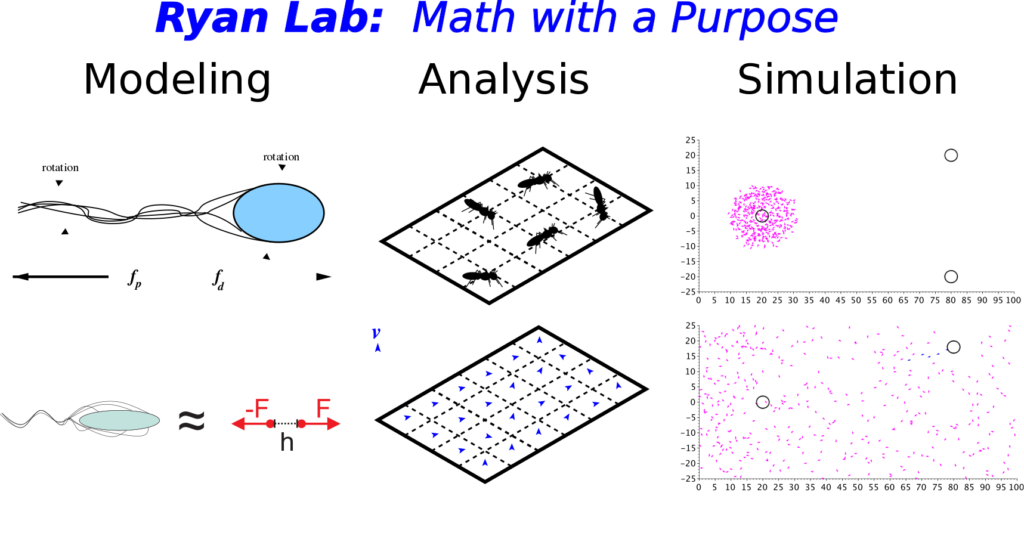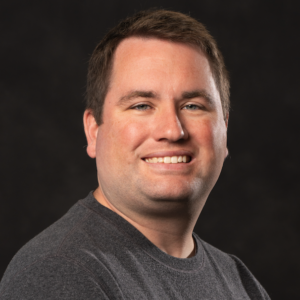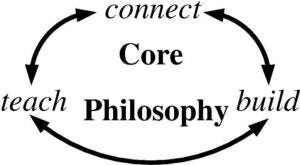

Leader of the Ryan Research Group
Awarded 2023 CSU Distinguished Faculty Award for Teaching – For Outstanding Teaching and Student Mentorship, two awards for tenured/tenure-track over whole university
Awarded 2023-2024 Jearl D. Walker Outstanding Teaching Award – For Outstanding Teaching and Student Mentorship in the College of Arts and Sciences
2025, 2022, 2020, 2018 CSU Golden Apple Awards from the CSU Young Alumni Association nominated by recent alumni for impact on their education journey
The purpose is to build interdisciplinary teams of researchers and students to solve challenging real world problems in Physics, Biology, and Material Science
Editorial Board Membership:
- Associate Editor, Involve: A Journal of Mathematics
- Review Editor, Frontiers in Systems Biology, Section: Multiscale Mechanistic Modeling
co-Director of the CSU Center for Applied Data Analysis and Modeling (ADAM)
Want a Recommendation Letter from me? Read This
Upcoming Travel/Talks:
July 2026 organizing Minisymposium at SIAM Annual Meeting in Cleveland
Sept 2025 Biology, Geology, and Environmental Sciences Colloquium, CSU
Feb 2024 Applied Math Seminar, Dept. of Mathematics, Univ. of Pittsburgh
Feb 2024 Mathematics Colloquium, Dept. of Mathematical Sciences, Kent St. Univ.
Mar 2024 Mathematics Colloquium, Dept. of Mathematics, Youngstown St. Univ.
Conferences Organized:
Workshop on Mathematical issues of complex systems in biology and medicine
Marseille, France, Feb. 24-28, 2020
2017 NE Ohio Applied Math Forum
Thursday, April 6th, 2017
Core Philosophy

Connect: By forming a network of collaborators. I see three areas for growth in research opportunities:
- 1. Intradepartmental – seek collaboration with analysts and numerical experts interested in studying biological and physical systems using mathematical models.
- 2. Intra-university – form a network with other departments in the sciences to begin interdisciplinary research seeking to explain their experimental observations.
- 3. National – continued longstanding collaborations with my former colleagues at PSU and Argonne National Lab as well as forming new collaborations at other premier universities.
By having three levels of research opportunity I can expose myself as well as students to a wide range of experts who all possess different strengths. This will also lead to an increased number of quality publications within my research group.
Teach: through mentoring students. Besides teaching courses, for which I have maintained consistently high evaluations at the University of Akron, Penn State, and Kent State (twelve sections of eight different courses), I seek to teach through research opportunities. I would like to institute an optional weekly seminar for interested students where a specific advanced topic is covered such as harmonic functions or Arzela-Ascoli theorem and a few short applications of the concept can be shown. This would illustrate the power of higher level mathematics and acquaint students with the necessary concepts to advance in their work. As a student at Penn State, my advisor organized a weekly seminar for students/postdocs to present their current work. I would also like to adopt this idea by having a weekly student seminar where junior faculty and students within the research group (or special guests) can present work either in progress or completed. This will allow students to work on their presentation skills and get valuable feedback from others on their work or possible solutions to current problems.
Build: a research program from the ground up. This will begin with high level research and be sustained through superior organizational and planning skills. I will take my observations of my advisor and others who have built great research programs and begin to form my own group with its unique identity. In order to establish a research group I must first show leadership by producing high quality work in all my collaborative efforts. Then I need to attract motivated students who want to work on interesting projects. Only from continued success on both fronts can one build a successful research program.
